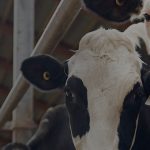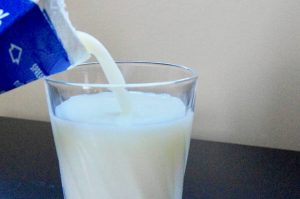
It is the highest increase since the CDC was created in 1967. For consumers, this is certainly not great news. Milk, butter, and yogurt prices will likely skyrocket in the new year.
Canadian industrial milk was already the most expensive in the world, has been for many years. The Canadian Dairy Commission (CDC) is the centrepiece of our supply management system for dairy. In Canada, we produce what we need, and dairy farmers get a fair price for their work. Sounds reasonable. Only a privileged few can produce milk in Canada, making milk itself almost a public good.
But in recent months, Canadians have seen that quality may not always be there. “Buttergate,” which shone light on the practice of feeding cows with palmite, a palm oil derivative coming from other parts of the world, affecting our butter’s hardness, made many Canadians scratch their heads. The Dairy Farmers of Canada banned the practice in the spring and created a working group to investigate the matter.
With this latest increase, raising farmgate prices for milk so farmers can make a decent living is not really the issue. What’s problematic is the way the CDC does it. The Crown corporation, owned by all Canadians, is controlled by three people, all with dairy connections. Processors, retailers and, most importantly, consumers are not even represented on the board. To be clear, the 72 people working for the CDC in Ottawa are working for the Canadian public, not dairy farmers. We set dairy prices, not farmers themselves as supply management is a regime owned by all Canadians. However, 91 per cent of the Canadian public doesn’t even know the CDC exists and how the commission operates even though its decisions impact the lives of most Canadians.
The other concern many observers have are methods used to calculate these increases. The CDC posted a very simple 7-page report which explains how it calculated the increase. Not only is raw data not provided, but we have no idea if data used in the pricing formula are verified by competent authorities. From what we know, all the data is self-reported by a group of randomly selected dairy farmers, so the report states. The sophistication of these reports is worthy of the work of a young university student at best.
Higher milk prices won’t be good news for consumers, but it won’t be good for the dairy industry either. With this decision, we’re expecting more illegal milk from the United States to enter the Canadian market, as was the case a few years ago with diafiltered milk. Goat milk and other alternatives on the market will become more financially attractive as prices for milk and dairy products continue to rise. But dairy farmers won’t care. Most will cash out and exit the industry while others continue to do well under a regime that guarantees them revenue.
Great for them, but we’re on pace to lose half of our dairy farms in Canada by 2030. We could have fewer than 5,000 farms within the next decade. If that’s what Canadians want, fine. But if we want to really help our dairy industry, a good starting point would be to reform the CDC and address its questionable governance and opaque processes.
Dr. Sylvain Charlebois is senior director of the agri-food analytics lab and a professor in food distribution and policy at Dalhousie University. Troy Media.

























